Kosovo is the youngest nation in Europe and one of the youngest nations in the world. Its flag features six white stars in a slight arc over a golden map of the nation on a field of blue. The simple design is both symbolic and controversial. To understand the design and the controversy found within it, a short primer on the geopolitical history of the Balkan region is needed.
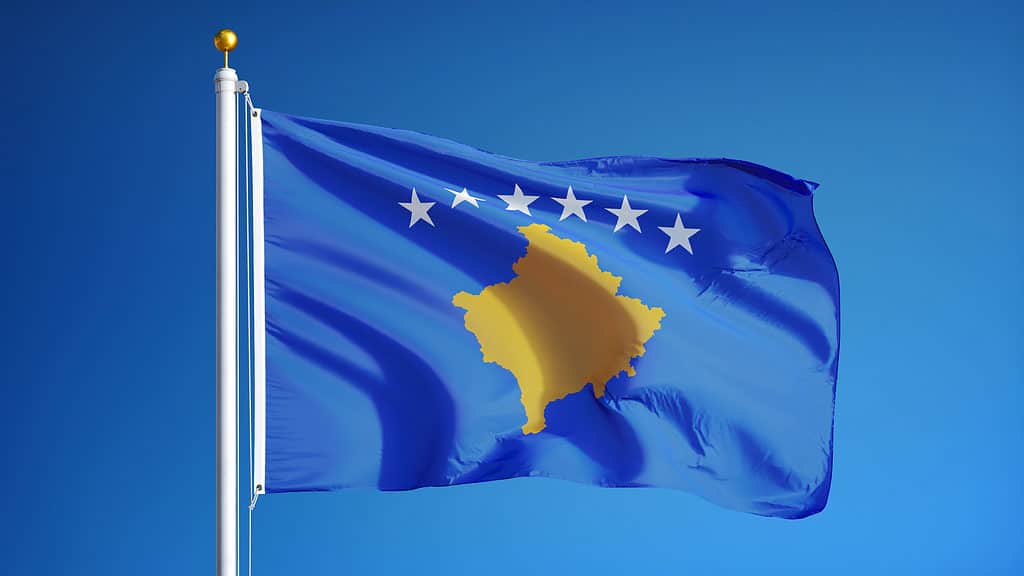
The flag of Kosovo has a simple, albeit controversial, design.
©railway fx/Shutterstock.com
Kosovo
Officially known as the Republic of Kosovo, the nation lies in the heart of the Balkan peninsula in southeastern Europe. The peninsula is named for the Balkan Mountains.
While Kosovo is located on the peninsula, it has no coastline of its own. The nation is landlocked by its borders with Serbia to the north and east, Montenegro and Albania to the west, and North Macedonia to the south.

This geographic map of the Balkan Peninsula shows a landlocked Kosovo.
©Ikonact / CC BY-SA 4.0 – License
The Kosovar government is a multi-party parliamentary representative democratic republic. The President is the head of state, while the Prime Minister is the head of the government. There are parliamentary elections every four years.
Pristina is Kosovo’s capital city. It is also the nation’s most populous city, with a metro population of over 213,000. The population of Kosovo as a whole is around 1.8 billion, though it is difficult to ascertain an exact number since some ethnic groups boycott any government-sponsored census. The reasons for such boycotts stretch far back into the history of the Balkan region.
Yugoslavia
Kosovo was part of the Ottoman Empire for over 400 years. Serbia took control of the territory during the First Balkan War in 1912-1913. Kosovo was then grafted into Yugoslavia, which was formed at the end of World War I. The Yugoslav state was created on December 1, 1918, when Croat, Slovenian, and Bosnian territories united with the Serbian Kingdom.

The flag of Yugoslavia flew from 1918 until the nation’s dissolution in the 1990s.
©Flag designed by Đorđe Andrejević-Kun[3]SVG coding: Zscout370 / Public domain – License
Yugoslavia broke apart during the Nazi occupation of World War II but was reunited after the war. The state remained unified until the 1990s. Slovenia and Croatia both declared their independence in 1991. Bosnia-Herzegovina followed suit in 1992.
Kosovo’s independence would not come as quickly. It was the site of the Battle of Kosovo, a conflict in 1389 between the Ottoman Empire and the Serbs. That battle and the land Kosovo occupies in the heart of the Balkan peninsula is typically seen as an integral part of Serbia’s national identity.
In 1991, Albanian members of Kosovo’s Provincial Assembly voted to establish the Republic of Kosovo (now known to historians as the First Republic of Kosovo). These Provincial Assembly members declared Kosovo an independent state on September 22, 1991. They also adopted a new flag which was very similar to the flag of Albania.
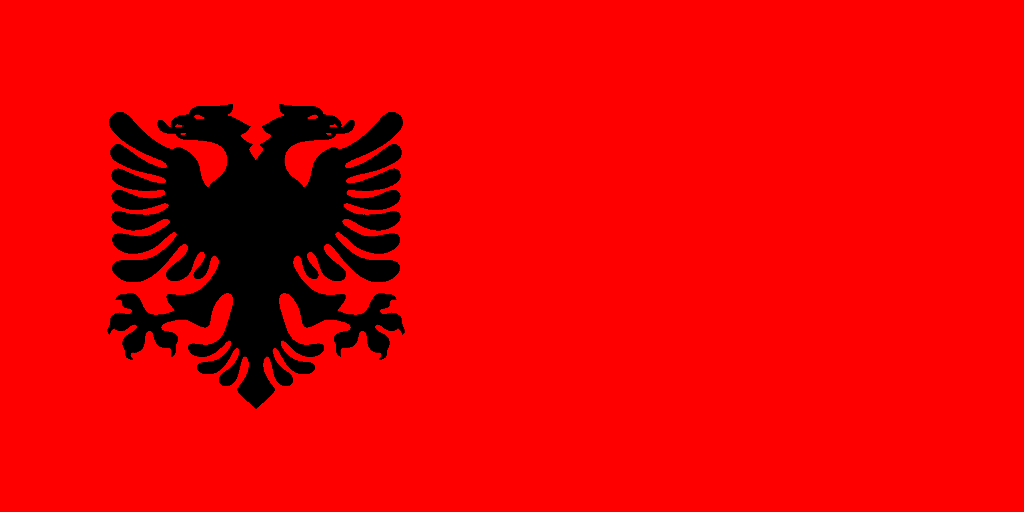
The First Republic of Kosovo’s flag featured the same colors and design as Albania’s.
©Željko HeimerTomislav Todorović / CC0 – License
The Kosovo War
These moves continued to ratchet up the tensions between Yugoslavia and Kosovo through the mid to late-1990s. In 1998, war finally erupted between Yugoslav forces and the Kosovo Liberation Army (KLA), an organization formed earlier in the decade. The KLA was made up of Albanian rebels in Kosovo. Over 10,000 people died in the Kosovo War, and nearly 1.5 million Kosovar Albanians were displaced.
The war lasted nearly a year and a half, but it came to an end in 1999 after NATO began launching airstrikes against Yugoslavians. The United Nations did not approve those airstrikes. Many nations supported the involvement of NATO but were strongly condemned by others.
At the end of the war in 1999, the United Nations took governing control of Kosovo. The U.N. would govern Kosovo until its formal unilateral declaration of dependence on February 17, 2008. The Kosovar flag was adopted immediately after the Declaration of Independence.
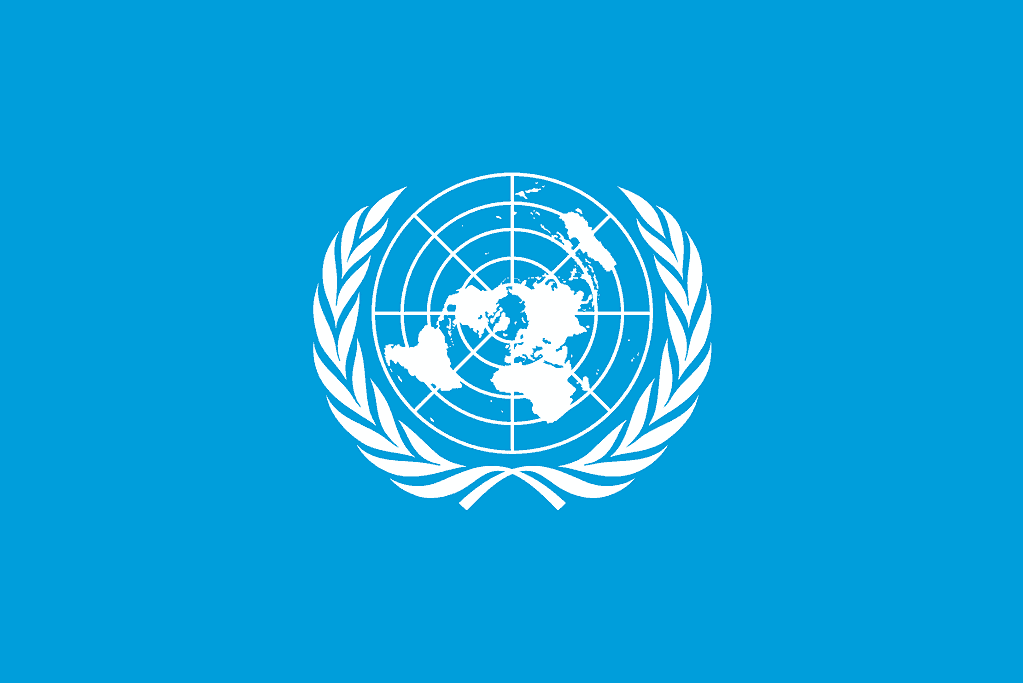
The flag of the United Nations was the only officially recognized flag in Kosovo from 1999 until 2008.
©Denelson83, Zscout370 ve Madden / Public domain – License
Adoption of a New Flag
While under U.N. governance (officially known as the United Nations Interim Administration Mission in Kosovo), the U.N. flag was used for all official purposes in Kosovo. During those nine years, a few other flags appeared in Kosovo, though none gained wide acceptance.
One such flag was the Flag of Dardania, introduced by Ibrahim Rugova, the first president of the Republic of Kosovo. The Kingdom of Dardania was an ancient society in the region of modern-day Kosovo. The flag garnered only modest recognition in Kosovo, although it has since become a defacto symbol of the Kosovar president.
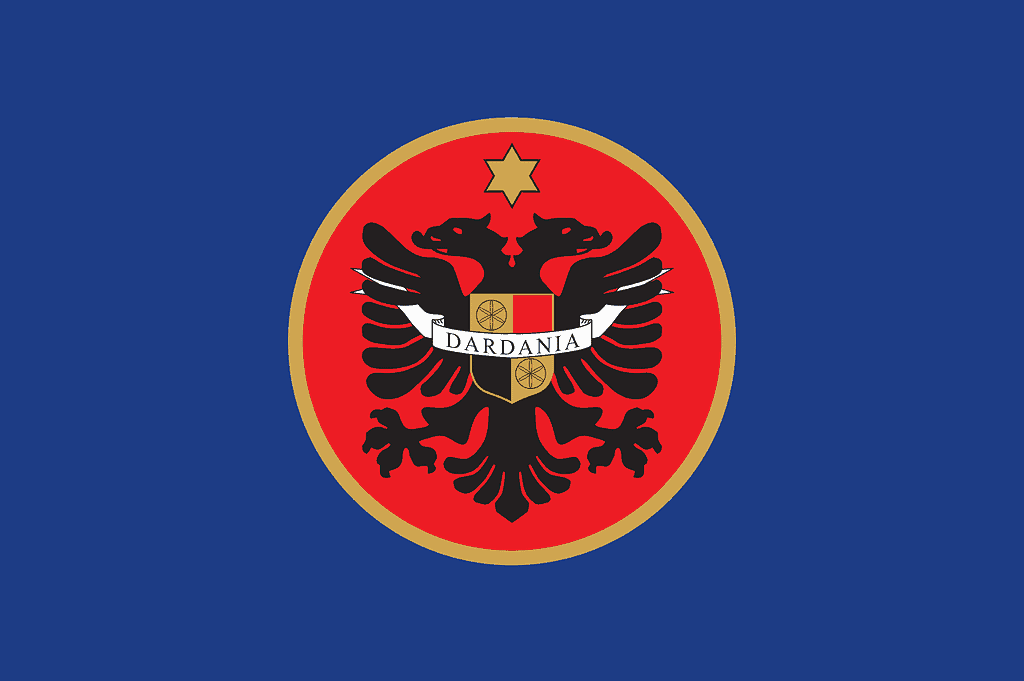
The flag of Dardania was introduced while Kosovo was under U.N. governance but was not widely accepted.
©Mendim Rugova / Public domain – License
When the Parliament of Kosovo formally declared the nation’s independence from Serbia in 2008, it adopted the flag that represents Kosovo today. The design is also used on Kosovo’s official coat of arms.
The design came through an international competition held by the Kosovo Unity Team. Nearly 1,000 flag designs were received, some from as far away as New Zealand and South Africa. Surprisingly, seven entries from Serbia were also received. Muhamer Ibrahimi submitted the winning design.
The Flag’s Design and Symbolism
The Kosovo Symbols Commission was clear on the parameters of the new flag. It could not carry any image associated with an ethnic group. It also could not mirror the flag design of another nation, which meant the former flag of the First Republic of Kosovo would not be accepted since it mirrored the Albanian flag. The tensions between the Albanian majority and Serb minority in Kosovo were still hot, and the government did not want to fan those flames through its new flag symbol.
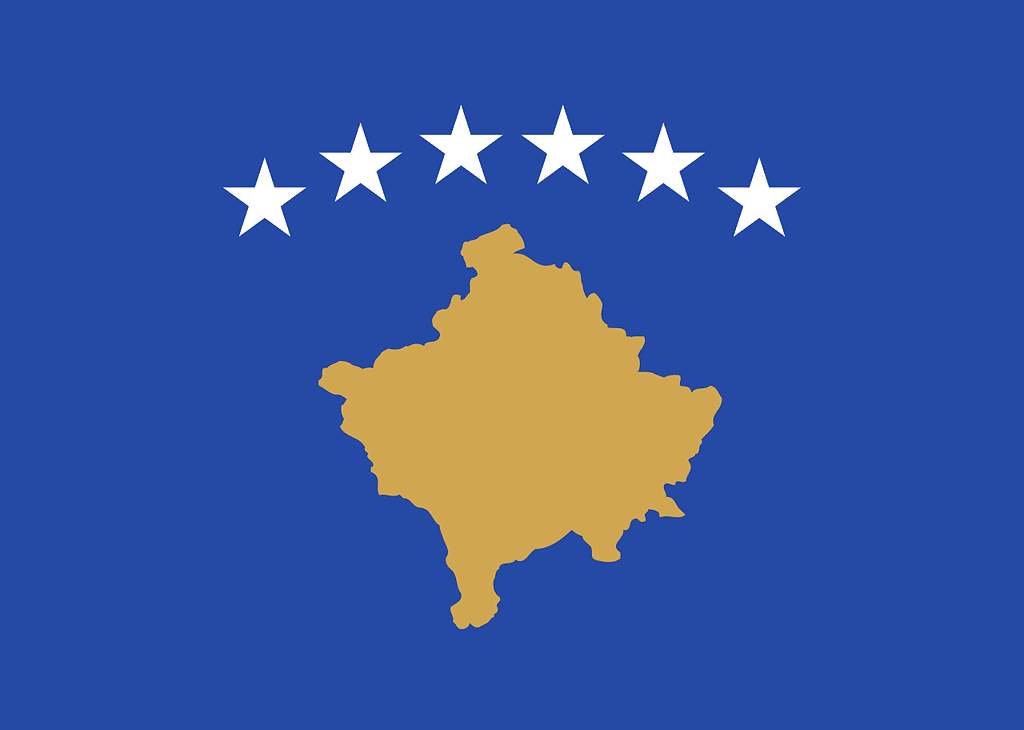
The Kosovo flag is a blue field with a golden map of the nation underneath six white five-pointed stars.
©Cradel (current version), earlier version by Ningyou / Public domain – License
Ibrahimi’s design was purposefully simple. The blue field represented the Kosovar people’s aspirations for Euro-Atlantic acceptance and integration.
A golden map of Kosovo is in the center of the flag. Gold was chosen to represent Kosovo as a peaceful and prosperous country. The Kosovar flag is one of only two in the world that features a map of the nation as a design element. Cyprus is the only other country to use a geographical outline of the nation on its flag.
A gentle arch of six white stars with five points appears over the map of Kosovo. The stars were designed to represent the equality of the six major ethnic communities in Kosovo: Albanians, Serbs, Bosniaks, Turks, RAE (Romani, Ashkali, and Egyptians), and Gorani.
The Flag’s Controversy
Albanians represent approximately 90% of Kosovo’s population, although the exact number is unknown. As mentioned earlier, groups such as the Serbs often boycott any Kosovar census. Some in the Kosovar Albanian community wanted the Kosovar flag to closely mirror the flag of Albania as it had in the past. They pushed for a red and black design. There was also a move to include an eagle on the flag, similar to that of Albania. However, the Symbol Commission’s directive to avoid any design associated with another nation or ethnicity prohibited any such concepts.
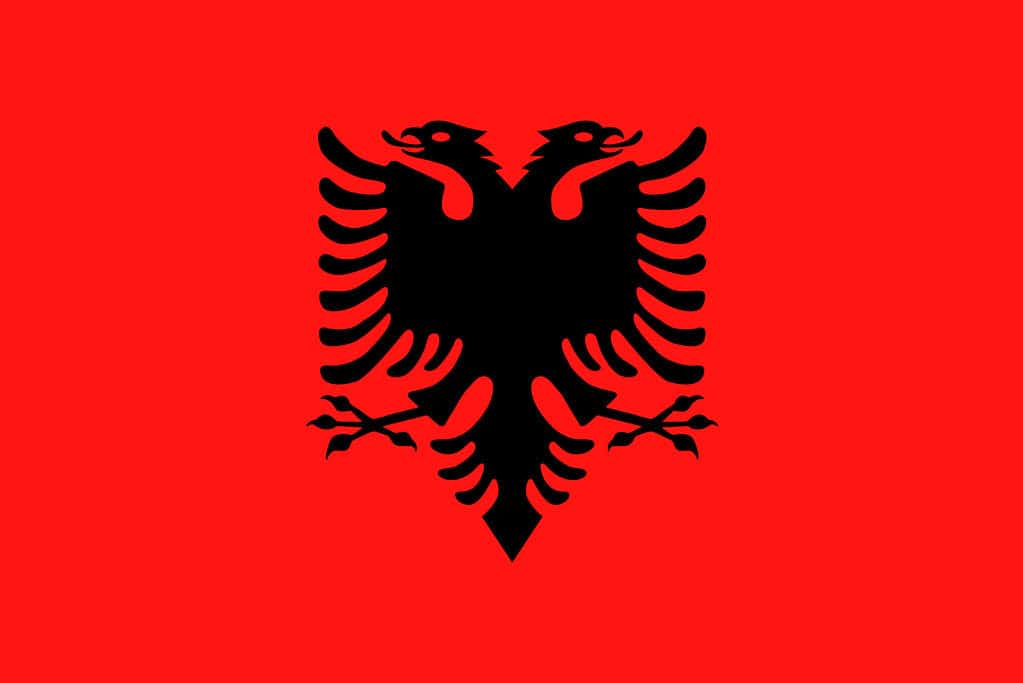
Many Kosovar Albanians wanted a flag that resembled the Albanian flag seen here.
©iStock.com/dikobraziy
There was also controversy among the minority populations in Kosovo, specifically the Serbs. Serbia does not recognize the independence of Kosovo. Many Serbs in Kosovo reject the flag since it symbolizes Kosovo’s independence from Serbia. The Serbian flag is still flown in the Serb-majority areas of northern Kosovo.
The Serbs’ rejection of the legitimacy of the Kosovar government has led to continual clashes between the Serbs and Albanians, who occupy the majority of governmental positions.
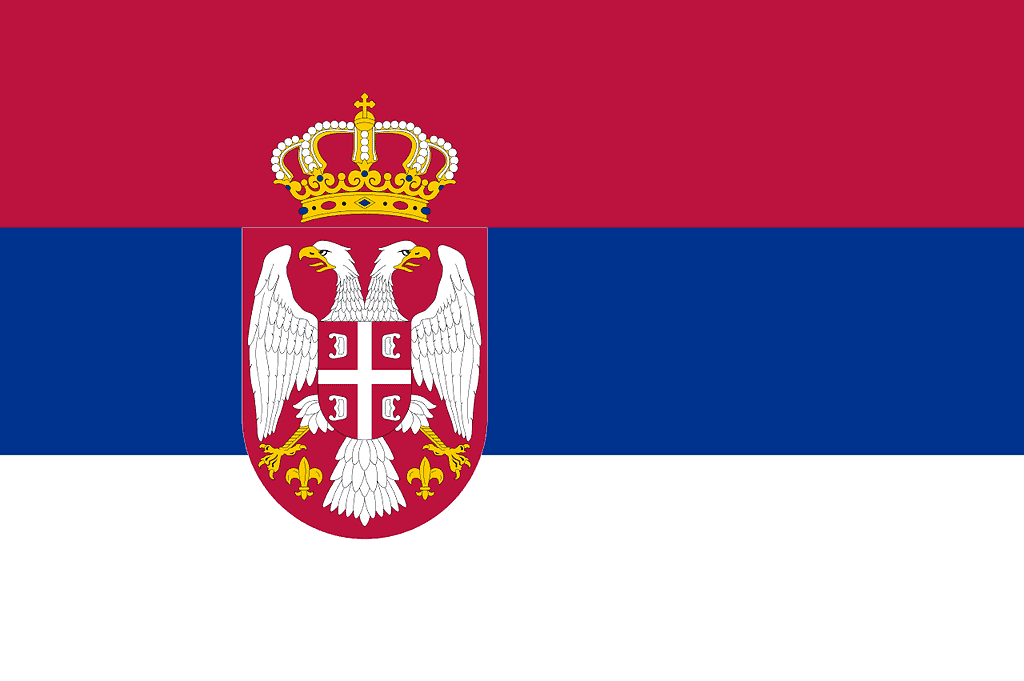
Serbs in northern Kosovo often fly the Serbian flag, seen here, in protest of the Kosovar government.
©National Assembly of the Republic of Serbia (Serbian Parliament) / Public domain – License
The photo featured at the top of this post is © iStock.com/NatanaelGinting
Thank you for reading! Have some feedback for us? Contact the AZ Animals editorial team.






